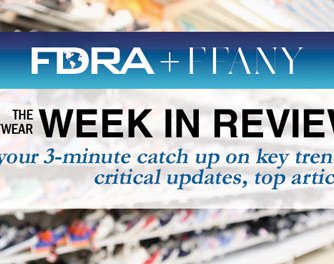It’s too soon to say whether the Federal Reserve’s efforts to reduce inflation will lead to a recession; however, continuing interest rate hikes increase the likeliness, according to the National Retail Federation’s (NRF) Chief Economist Jack Kleinhenz in the January Issue of the NRF’s Monthly Economic Review. [NRF Economist Sees Balance Between Inflation And Interest Rates Key To Avoiding Recession – FDRA]
“This year starts with the possibility of easing inflation but also uncertainty,” Kleinhenz said, referring to the interest rate hikes. “There is no easy fix for inflation, and the Fed’s job of trying to bring down rising prices without damaging the labor market or the rest of the economy is not enviable.
“It isn’t impossible to sidestep a recession, but when the economy slows, it becomes very fragile, and the risk rises significantly,” Kleinhenz continued. “If a recession is in the cards, it will likely be rising interest rates that set it off.”
Kleinhenz’s remarks in the publication noted that the Fed increased interest rates by another one-half percentage point in December even though year-over-year inflation, measured by the Consumer Price Index, fell to 7.1 percent in November. Inflation was down from 7.7 percent in October for the fifth consecutive monthly decline after a peak of 9.1 percent in June. The interest rate hike was smaller than recent three-quarter-point increases but took rates to their highest level in 15 years and showed “the battle against inflation is still at hand,” the review said.
Even though inflation has fallen, “it remains in the pipeline and is not going away,” the report said. “Americans are still out spending” – fueled by growing jobs and wages, built-up savings and careful use of credit – and “healthy” 2022 holiday sales showed “while consumers don’t like higher prices, they are able and willing to pay them.”
NRF’s final holiday spending data will not be available until January 18, but November sales, as calculated by the organization, increased 5.6 percent year-over-year, putting the season on track to meet its forecasted 6 percent to 8 percent growth over 2021. And after a 2.6 percent year-over-year increase in the third quarter, the GDP grew at a 2.7 percent rate in late December, according to the Federal Reserve Bank of Atlanta’s GDP Now real-time tracker.
While the Fed’s interest rate hikes are intended to slow the economy and bring inflation under control, the report said it could take six months or more for its monetary policy to impact the GDP and 18 months for inflation. That means policymakers “act knowing they will not see the impact for months and that their action comes at the risk of inducing a recession.”
“There are downside risks both in doing too much and too little, and the Fed is well aware that the balance is delicate,” Kleinhenz said.



